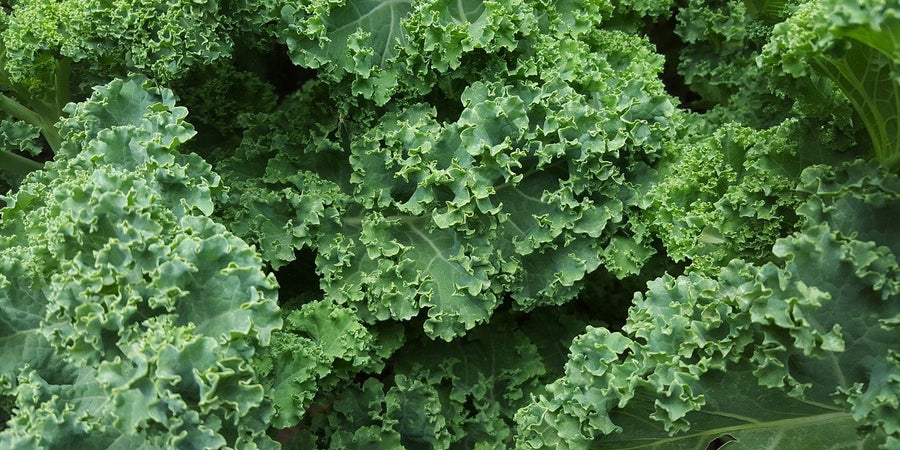How To Grow Kale

Kale, or Borecole, is not only one of the prettiest winter vegetables, its also one of the hardiest vegetable too, withstanding worst of the winter weather.
The leaves of most of the kale varieties are either dark green curled leaves on compact plants or varieties that grow tall with long narrow blistered leaves with succulent waxy surface which during winter weather helps slide water off the surface. New on the market are varieties with colour: deep reds such as Red Ruble, which also give architectural structure to a dormant winter garden. Kale is a nutritious vegetable providing vitamins C, A and K as well as the highest level of vitamin E of all the vegetables.
Here's Our Guide to Growing Kale:
How, Where & When to Grow Kale
Plants will benefit from outdoor growing situation in firm consolidated soil, which has been improved with well-rotted organic matter earlier in the year. Sow seeds thinly 1cm deep in late spring (March-June) in seed trays or modules, with successful germination taking 5 to 7 days when suitable conditions are met; thinning out and potting on seedlings into individual small pots.
Distance
Plant out carefully with little root disturbance as possible in early summer with 45cm distances between plants and rows.
Regular Care
Once plants are established, water sparingly except in dry spells to encourage tougher leaves for overwintering. If leaves start to turn yellow provide a high nitrogen feed to restore colour. Taller variety will require staking before the onset of winter, to protect them for wind damage.

Harvesting Kale
Start harvesting leaves from autumn, picking tender leaves from the centre of the crown to encourage re-growth.
Nutrition
Kale has around 33 calories per 100g. It's largely water (about 88%), but also contains 3.4g protein, 1.4g carbohydrate, 1.6g fat and about 2g fibre per 100g raw kale. There are about 43mg sodium in kale (per 100g) which is a fraction of the 2.4g that is recommended as the maximum by the NHS for adults a day. Kale has been touted by the media as a superfood because it is nutrient-dense. It contains B vitamins such as folate, which we need for energy, to form healthy blood cells and to reduce the risk of central neural tube defects in pregnancy. Kale also contains vitamin C and vitamin E which are important antioxidants needed to help support the immune system, but it’s probably most well-known as being a very good source of vitamin K, which we need to help wounds heal properly. As for minerals, Kale contains most of the everyday minerals we need, including potassium, which supports effective heart function; calcium, for strong bones and teeth; magnesium, for good hormone health, and selenium, which supports the immune system.
Cooking Kale
Kale can be eaten raw or cooked. Its such a simple food to add to a myriad of dishes…toss it with any pasta, chop it up and include with all salads, and add it to scramble eggs.
Growing Guides
If you're thinking of sowing other vegetable and herb seeds, discover more of our growing guides.




